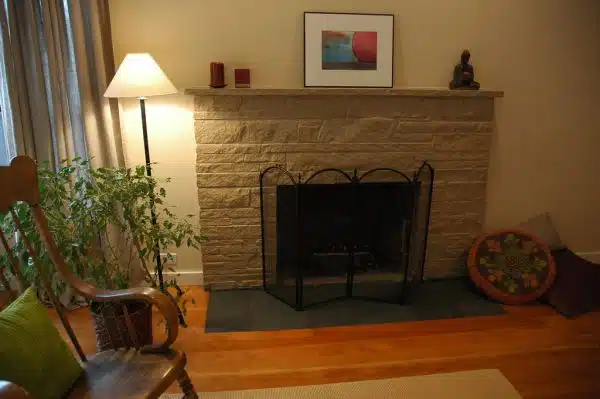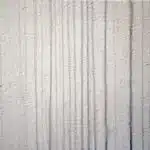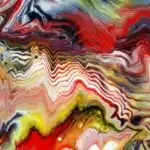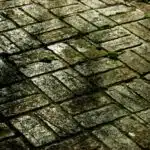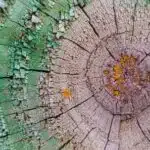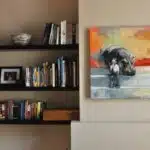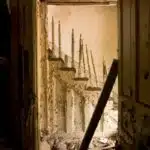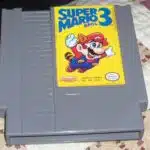Maintaining a clean and pristine-looking interior is a crucial aspect of home decor. Flat paint, with its smooth and velvety finish, is a popular choice for many homeowners due to its ability to hide imperfections on the walls. However, cleaning flat paint can be challenging as it tends to absorb dirt and stains easily, leaving unsightly marks that can ruin the appearance of your walls.
As a professional painter/decorator, I understand the importance of keeping your walls looking their best. In this article, I will discuss effective ways to clean flat paint without damaging or discoloring it. Whether you have children or pets at home or simply want to maintain the aesthetics of your living space, following these tips will help you achieve a spotless and polished look for your walls. So let’s get started!
Understanding The Properties Of Flat Paint
Flat paint finishes are known for their non-reflective and smooth appearance, making them a popular choice for interior walls. However, unlike other paint finishes that contain more gloss, flat paint is highly absorbent and porous, which makes it prone to damage from cleaning. Due to its delicate nature, it’s important to understand the properties of flat paint before attempting to clean it.
One common mistake people make when cleaning flat paint is using abrasive or harsh cleaning solutions. Abrasive materials like scouring pads or steel wool can damage the surface of the paint by scratching and dulling its finish. Similarly, using harsh chemical cleaners can strip away the protective coating on the paint and cause discoloration or fading. To avoid these mistakes, it’s best to use gentle cleaning techniques and mild detergents when dealing with stains on flat painted surfaces.
Another important factor in understanding flat paint is its tendency to leave behind visible marks and streaks after cleaning attempts. This occurs because of the porous nature of flat paint; when liquid comes into contact with a stain, it penetrates deep into the surface rather than remaining on top like with glossier paints. As a result, even minor spills or stains can leave unsightly marks on flat painted walls that are difficult to remove without leaving behind streaks or further damage. With this knowledge in mind, it’s crucial to identify the type of stain before attempting any form of cleaning.
To properly clean flat painted surfaces requires an understanding of their unique properties compared to other types of finishes. Avoiding common mistakes such as abrasive materials and harsh chemicals will prevent damage from occurring during a cleaning attempt. Identifying stains before beginning any form of cleaning is also essential in preventing further damage and achieving successful results in removing unwanted blemishes from your interior walls.
Identifying The Type Of Stain
Understanding the properties of flat paint is essential in properly cleaning it. Flat paint has a porous surface that absorbs dirt and stains easily, making it more challenging to clean than other types of paint finishes. It is also susceptible to fading and rubbing off when exposed to water or chemicals, so proper handling is crucial.
Identifying the type of stain on your flat-painted walls will help determine the appropriate cleaning method. Removing ink stains requires a different approach from tackling food stains. For instance, ink stains can be removed by gently rubbing them with a cloth dampened with rubbing alcohol or vinegar solution, while food stains can be cleaned using warm water and mild detergent.
Preparing the cleaning solution is the next step after identifying the stain type. A professional painter/decorator would suggest mixing warm water and mild detergent in a bucket. For stubborn stains, add baking soda or hydrogen peroxide to the mixture for added cleaning power. Do not use harsh chemicals like bleach or ammonia as this may damage your flat paint’s surface. Once you have prepared your cleaning solution, you can proceed with applying it to the stained area using a soft sponge or cloth, being careful not to scrub too hard as this may damage your painted wall’s finish.
Preparing The Cleaning Solution
To effectively clean flat paint, it’s important to prepare a suitable cleaning solution. The first thing to do is to determine the ratio of water to cleaning solution that should be used. Generally, a 1:3 ratio works well for most scenarios. This means that for every one part of cleaning solution used, three parts of water should be added.
It’s important to take safety precautions when preparing the cleaning solution. Wear rubber gloves and eye protection to protect your skin and eyes from any potential irritants in the cleaning solution. Additionally, ensure that the area you are working in is well-ventilated and avoid inhaling any fumes that may arise from mixing chemicals.
Once you’ve determined the mixing ratios and taken necessary safety precautions, it’s time to mix the cleaning solution together. Add the appropriate amount of cleaning solution into a bucket and slowly add water while stirring continuously until fully blended. It’s important to use warm water as this will help break down any dirt or grime on the surface being cleaned.
Before applying the solution to your entire flat painted surface, it’s crucial to test it on a small area first. This will enable you to determine how effective the mixture is at removing dirt without damaging or discoloring your paintwork. In addition, testing will also give you an idea of how much pressure you can apply during cleaning without causing damage. By taking these steps before proceeding with full-scale cleaning, you can ensure that your flat painted surfaces remain clean and undamaged after washing.
Testing The Solution On A Small Area
Before fully committing to cleaning your flat paint, it is essential to test the solution on a small area. This step will help you determine whether the cleaning solution is safe for your walls and prevent any potential damage. To do this, apply a small amount of the cleaning solution to an inconspicuous part of the wall and wait for it to dry. If there are no visible changes or damages, then you can proceed with cleaning.
It is crucial to ensure proper ventilation during the testing process and throughout the entire cleaning process. Open windows, turn on fans or air conditioning units to improve air circulation and reduce fumes or odors from the cleaning solution. Additionally, it would be best if you wore protective clothing such as gloves and goggles when handling chemicals.
Taking precautions before starting any home improvement project is necessary. By following these guidelines, you will avoid any adverse effects that could potentially cause harm to yourself and your home.
Moving forward, gathering all necessary cleaning supplies is equally important in achieving excellent results in flat paint cleaning.
Gathering The Necessary Cleaning Supplies
Before starting the cleaning process, it is essential to gather all the necessary cleaning supplies. For cleaning flat paint, you will require a few specific items that are easily available at any hardware or home improvement store. The following section lists the various items needed for cleaning flat paint.
Firstly, you will need a bucket of warm water, along with a mild detergent or soap. Secondly, get a microfiber cloth or sponge that is gentle on the painted surface. Thirdly, make sure to have an old towel or rag handy to dry off any excess moisture. Fourthly, if there are any stubborn marks or stains on the wall, you may want to consider using a magic eraser. Lastly, do not forget to wear gloves and protective eyewear throughout the cleaning process.
When it comes to cleaning techniques for flat paint walls, it is best to avoid abrasive scrubbing as this could damage the surface of the paint. Instead, use gentle circular motions when wiping away dirt and grime. Take care not to saturate the wall with too much water as this could cause water stains and further damage to the paint.
Safety precautions should always be taken when cleaning flat paint walls. Make sure your workspace is well-ventilated and avoid inhaling fumes from harsh chemicals while cleaning. Furthermore, keep children and pets away from your workspace while cleaning flat paint walls.
By gathering all necessary supplies and taking proper safety precautions before beginning the cleaning process, you can ensure that your flat painted surfaces remain clean without causing any damage in the long run. In our next section, we will discuss how using a soft bristle brush can help with removing stubborn marks on flat painted walls without damaging them further.
Using A Soft Bristle Brush
When it comes to cleaning flat paint, using a soft bristle brush is one of the most effective methods available. The benefits of this method are manifold: not only does it remove dirt and grime from the surface of the paint, but it also helps to prevent any damage or wear and tear that might otherwise occur. Soft bristle brushes are particularly useful for cleaning areas that are difficult to reach with other tools, such as corners and crevices.
Of course, there are alternatives to using a soft bristle brush for cleaning flat paint. One option is to use a microfiber cloth or sponge in combination with a gentle cleaning solution. This approach can be effective for removing light stains and grime without damaging the paint surface. However, when dealing with more stubborn or deeply ingrained dirt, a soft bristle brush is often the better choice.
Ultimately, choosing the right tool for cleaning your flat paint will depend on a variety of factors, including the type and severity of the stain or dirt in question. If you’re unsure which method is best suited to your needs, it’s always a good idea to consult with a professional painter or decorator who can offer advice based on their experience and expertise. In the next section, we’ll explore some alternatives to using abrasive materials for cleaning flat paint.
Avoiding Abrasive Materials
Abrasive materials should be avoided when cleaning flat paint. These can cause damage to the paint and leave unsightly marks or scratches. Instead, it is best to use gentle cleaning alternatives that won’t harm the surface of the paint. Eco-friendly options such as vinegar and baking soda mixed with water can be effective in removing dirt, grime, and stains without causing any damage.
In addition to using eco-friendly options, consider using a soft cloth or sponge when cleaning flat paint. Avoid using rough materials like scouring pads or steel wool as they can scratch the surface of the paint. Furthermore, it is important to avoid rubbing too hard on a spot as this can cause discoloration on the surface.
Overall, it is important to take precautions when cleaning flat paint to prevent any unnecessary damage. Cleaning alternatives and eco-friendly options are readily available, so there’s no need to resort to harsh chemicals or abrasive materials that could potentially harm the surface. By following these simple tips, you can ensure that your flat painted surfaces remain clean without any unwanted blemishes or scratches.
Transition: Now that we’ve discussed how abrasive materials should be avoided when cleaning flat paint and looked at some cleaning alternatives and eco-friendly options, let’s move onto another important step in keeping your painted surfaces looking their best – using a damp cloth.
Using A Damp Cloth
Using a damp cloth is one of the most straightforward methods for cleaning flat paint. It helps to remove dirt, grime and other stains from the surface without damaging the paint. However, there are both advantages and disadvantages to using this method.
One advantage is that it is an easy and affordable way to clean flat paint. All you need is a clean, damp cloth and some patience. Another advantage is that it is safe for most types of flat paint and won’t cause any damage if done correctly. However, using too much water or applying too much pressure can cause the paint to lose its texture or even peel off.
Comparing the effectiveness of different cleaning tools for flat paint, using a damp cloth may not be as effective as using a sponge or a soft-bristled brush. These tools can help scrub away stubborn stains without causing any damage to the surface. They also allow you to apply more pressure which can be useful in dealing with tougher stains.
Moving on from using a damp cloth, let’s explore how to remove stubborn stains from flat paint without causing any damage to the surface.
Removing Stubborn Stains
If you have stubborn stains on your flat painted walls, don’t worry. There are ways to remove them without damaging the paint. Removing coffee stains or tackling pet messes can be a daunting task, but with the right tools and techniques, it can be done.
Firstly, start by wiping the stained area gently with a damp cloth. Be careful not to rub too hard as this may cause further damage to the paint. If the stain persists, mix warm water and mild detergent in a bucket and use a clean sponge or cloth to apply the solution onto the affected area. Rinse thoroughly with clean water and dry with a soft cloth.
If the stain still remains after trying these methods, there are other options to consider. One effective method is using baking soda and water paste. Mix equal parts of baking soda and water to form a paste consistency and apply it onto the stained area. Leave it for 15-20 minutes before wiping away with a damp cloth.
- Use vinegar: Mix equal parts of vinegar and warm water in a bucket. Dip a sponge or cloth into the solution and gently rub onto the stained area.
- Try rubbing alcohol: Apply rubbing alcohol directly onto the stain using a cotton ball or swab.
- Consider using hydrogen peroxide: Mix equal parts of hydrogen peroxide and warm water in a spray bottle. Spray directly onto the stain and leave for 5-10 minutes before wiping away with a damp cloth.
In summary, removing stubborn stains from flat painted walls requires patience and care to avoid damaging your paint job. If wiping with water doesn’t work, try using mild detergents like baking soda paste or vinegar solutions instead. For more challenging stains such as coffee spills or pet messes, rubbing alcohol or hydrogen peroxide solutions may do wonders in removing them effectively without harming your walls’ finish.
Next up is dealing with grease and oil stains – another common problem that homeowners face when maintaining their home’s painted walls.
Dealing With Grease And Oil Stains
It’s no secret that grease and oil stains can be a real pain to deal with when it comes to flat paint. It’s like trying to clean up a spilled milkshake with a napkin – it just doesn’t work. But fear not, fellow painters, decorators, and enthusiasts! There are some tips and tricks you can use to make the process a little less daunting.
Firstly, let’s talk about prevention. The best way to deal with grease and oil stains is to avoid them altogether. This means making sure your kitchen or workspace is well-ventilated and free from any potential sources of oil or grease buildup. It also means being mindful of what you’re cooking or working on. If you know you’re going to be using oils or greases, consider laying down some protective covering on your surfaces beforehand.
One common mistake many people make when dealing with grease and oil stains is using hot water or harsh chemicals. While these may seem like logical solutions, they can actually do more harm than good in the long run. Instead, opt for gentle cleaners like dish soap and warm water. If the stain persists, try using a mixture of baking soda and water as a natural alternative. By following these tips for prevention and avoiding common mistakes, you’ll be well on your way to a grease-free surface in no time.
| Grease/Oil Stain Removal Tips | Pros | Cons |
|---|---|---|
| Use dish soap and warm water | Effective at removing light stains | May not work on heavier stains |
| Try baking soda and water mixture | Natural alternative that won’t damage paint | Requires more elbow grease |
| Avoid using hot water or harsh chemicals | Prevents further damage to painted surface | Less effective on stubborn stains |
Next up: addressing water stains!
Addressing Water Stains
- Removing existing water stains from flat paint requires a combination of cleaning and polishing.
- To prevent future water stains, it is important to seal and finish the paint with a protective layer.
- Cleaning painted surfaces should be done regularly to maintain the paint’s appearance and protect against water stains.
- Care should be taken when removing existing water stains to ensure that the paint finish is not damaged.
- The correct cleaning products should be used, depending on the type of paint, to ensure the paint is not discolored or damaged.
- Applying a sealant or wax can help protect painted surfaces from absorbing water, reducing the risk of water stains.
Removing Existing Stains
As a professional painter/decorator, there’s nothing more frustrating than seeing water stains ruining the appearance of your beautifully painted walls. But fear not, there are ways to remove those pesky stains without damaging your flat paint finish. Using natural cleaning solutions is not only effective but also prevents any harsh chemicals from seeping into the paint.
To start removing existing stains, first, mix equal parts of water and white vinegar in a spray bottle. Spray the solution onto the stained area and let it sit for a few minutes before wiping it away with a clean cloth. Another option is to use baking soda mixed with water to create a paste that can be applied to the stain. Allow it to dry completely before brushing off the residue.
Preventing future stains is just as important as removing existing ones. Regularly check for any leaks or moisture buildup around windows, doors, or ceilings as these are common culprits for water stains. Additionally, make sure to wipe up any spills or splatters immediately with a damp cloth and avoid using abrasive cleaners on your flat painted walls.
In conclusion, removing water stains from flat paint doesn’t have to be a daunting task. By using natural cleaning solutions and taking preventative measures against future stains, you can maintain the beauty of your painted walls for years to come. Remember, taking care of your home is an act of service not only to yourself but also to those who enter into your space.
Preventing Future Stains
Preventing future stains on flat painted walls is just as crucial as removing existing ones. As a professional painter/decorator, I recommend using protective coatings on surfaces that are prone to water exposure such as bathrooms and kitchens. These coatings can help repel water and prevent it from seeping into the painted surface, reducing the likelihood of stains.
Regular cleaning tools and equipment can also play a significant role in preventing future water stains. Microfiber cloths are particularly useful as they absorb moisture quickly and effectively without leaving any lint or residue behind. When wiping down surfaces, be sure to use gentle, non-abrasive cleaners to avoid damaging the paint finish.
Lastly, it’s essential to address any leaks or moisture buildup immediately to prevent water stains from forming. Regularly checking for any signs of wear and tear around windows, doors, or ceilings can help identify potential problem areas before they become more severe. By taking these preventative measures, you can maintain the beauty of your flat painted walls for years to come and create an inviting space for those who enter your home.
Cleaning Painted Surfaces
Removing stains is just one part of addressing water damage in painted surfaces. Proper cleaning techniques can help prevent future damage and prolong the life of your walls. As a professional painter/decorator, I recommend using gentle, non-abrasive cleaners when cleaning painted surfaces. Abrasive cleaners can remove not only dirt and grime but also the paint finish itself, leaving your walls vulnerable to further damage.
When cleaning painted surfaces, it’s essential to use the right tools for the job. Microfiber cloths are an excellent choice for wiping down walls as they absorb moisture quickly and efficiently without leaving any lint or residue behind. Regularly dusting your walls with a soft brush or microfiber cloth can also help prevent dirt and debris from building up on the surface, making them easier to clean and maintain.
Preventing damage is always better than dealing with it after the fact. By taking preventative measures such as using protective coatings on high-moisture areas and addressing leaks or moisture buildup immediately, you can reduce the likelihood of water stains forming on your walls. Regular cleaning and maintenance will also go a long way in keeping your painted surfaces looking their best for years to come. Remember that prevention is key when it comes to addressing water stains on painted surfaces!
Cleaning High Traffic Areas
High traffic areas in your home such as hallways, entryways, and staircases are more prone to dirt buildup. This is because they are frequently used by family members and guests. As a professional painter/decorator, I recommend that you clean these areas regularly to maintain their appearance.
Tips for preventing dirt buildup include using doormats at entryways, regularly vacuuming carpets and rugs, and wiping down surfaces with a microfiber cloth. These simple practices can significantly reduce the amount of dirt that accumulates on these surfaces.
The importance of regular cleaning cannot be overstated. Dirt buildup not only affects the appearance of your home but can also cause damage to surfaces over time. By regularly cleaning high traffic areas, you not only keep them looking great but also extend their lifespan. In the next section, we will discuss how to maintain flat paint to ensure it looks its best for years to come.
Maintaining Your Flat Paint
To maintain the cleanliness of high traffic areas, it’s important to establish a regular cleaning routine. The same principle applies to flat paint walls – regular cleaning can help prevent damage and prolong the life of your paint job. However, cleaning flat paint requires more care and attention compared to other types of paint finishes.
Preventing damage should be your top priority when cleaning flat paint walls. Avoid using abrasive or harsh cleaning products that can scratch or discolor the surface. Instead, opt for gentle cleaners like mild soap and water or vinegar and water solution. When wiping down the wall, use a soft cloth or sponge – never use a scrub brush or any type of abrasive pad as this can cause irreparable damage.
Choosing the right cleaning products is also crucial in maintaining your flat paint walls. Always read labels and look for cleaners specifically designed for flat paint finishes. Avoid using any product that contains ammonia or bleach as these can cause discoloration. When in doubt, test any new cleaner on an inconspicuous area before using it on the entire wall.
- Regular maintenance is key to preventing dirt buildup
- Gentle cleaners are less likely to cause damage
- Choosing the right products saves you money in the long run
If you’re not confident in your ability to clean your flat paint walls without causing damage, seeking professional help may be your best option. A professional painter/decorator has experience working with different types of paints and knows how to handle them properly. They also have access to specialized equipment and cleaning solutions that are safe for use on all types of paint finishes. With their expertise, you can rest assured that your walls will be cleaned thoroughly while avoiding any potential damage.
Seeking Professional Help
Hiring a professional cleaner to clean flat paint surfaces in your home may seem like the best option, but it comes with both pros and cons. One advantage is that professionals have the training and equipment to handle tough stains without damaging the paint. They can also provide a thorough cleaning, ensuring all areas are spotless. On the other hand, hiring professionals can be costly and may not fit into everyone’s budget.
If you choose to clean your flat paint surfaces yourself, there are several DIY techniques you can use. Start by dusting the surface with a soft brush or vacuum cleaner attachment to remove any loose dirt or debris. Then, mix warm water and mild dish soap in a bucket and use a soft cloth or sponge to gently scrub the surface. Avoid using abrasive cleaners or harsh chemicals as they can damage the paint.
It’s important to note that while DIY cleaning techniques can be effective, they may not provide as deep of a clean as hiring professionals would. Additionally, if not done correctly, DIY cleaning methods can also lead to damage on the painted surface. Consider weighing your options carefully before deciding which method is best for your needs and budget.
Moving on from discussing whether to hire professionals or take on cleaning tasks yourself, we will now address some frequently asked questions about how to clean flat paint surfaces effectively and safely.
Frequently Asked Questions (Faqs
Cleaning Techniques:
Flat paint is a popular choice for interior walls due to its smooth and matte finish. However, cleaning flat paint can be a challenge as it tends to absorb stains easily. Therefore, it is essential to use the right cleaning techniques when dealing with flat paint. The first step is to dust off any loose debris or dirt using a soft-bristled brush or a vacuum cleaner with a soft brush attachment.
Next, prepare a cleaning solution by mixing warm water and mild dish soap in a bucket. Dip a soft sponge or cloth into the solution and wring out excess water before gently wiping the painted surface in circular motions. Avoid rubbing too hard as this could damage the paint’s surface. Once done, rinse the sponge or cloth thoroughly in clean water and wipe down the surface again to remove any soap residue.
Common Mistakes:
One of the most common mistakes people make when cleaning flat paint is using abrasive cleaners or rough sponges that can scratch or damage the surface. Another mistake is not rinsing off soap residue properly, which may leave streaks or cause discoloration over time. It is also important not to use too much water when cleaning flat paint as excessive moisture can lead to mold growth or peeling.
To avoid these mistakes, always test any new cleaning product on an inconspicuous area of the painted surface before applying it extensively. Also, avoid using harsh chemicals such as bleach, ammonia, or vinegar that can cause discoloration or damage to the paint’s finish.
Conclusion:
Cleaning flat paint requires gentle handling and careful attention to detail. By following these simple techniques and avoiding common mistakes, you can keep your walls looking fresh and clean without compromising their appearance. Remember always; less is more when it comes to cleaning flat painted surfaces: less pressure, less moisture, less detergent – more care!
Conclusion
Flat paint is a popular choice for many homeowners due to its smooth, matte finish. However, cleaning flat paint can be a challenge as it is more prone to staining and damage than other types of paint. By understanding the properties of flat paint and properly identifying stains, you can effectively clean your walls without causing further damage.
To begin the cleaning process, it is important to prepare a suitable cleaning solution and test it on a small area. Once you have gathered the necessary supplies, focus on high-traffic areas where stains are most likely to occur. Properly maintaining your flat paint can also help prevent future stains and extend the life of your walls.
It is important to remember that seeking professional help may be necessary in some cases, particularly if the stain is severe or if you are unsure about how to properly clean your walls. By following these tips and taking proper care of your flat paint, you can enjoy a beautiful and long-lasting finish in your home. Remember: like a skilled painter with a steady hand, taking care of your flat paint will result in an elegant canvas that will leave an impression on all who see it.
Image Credits

